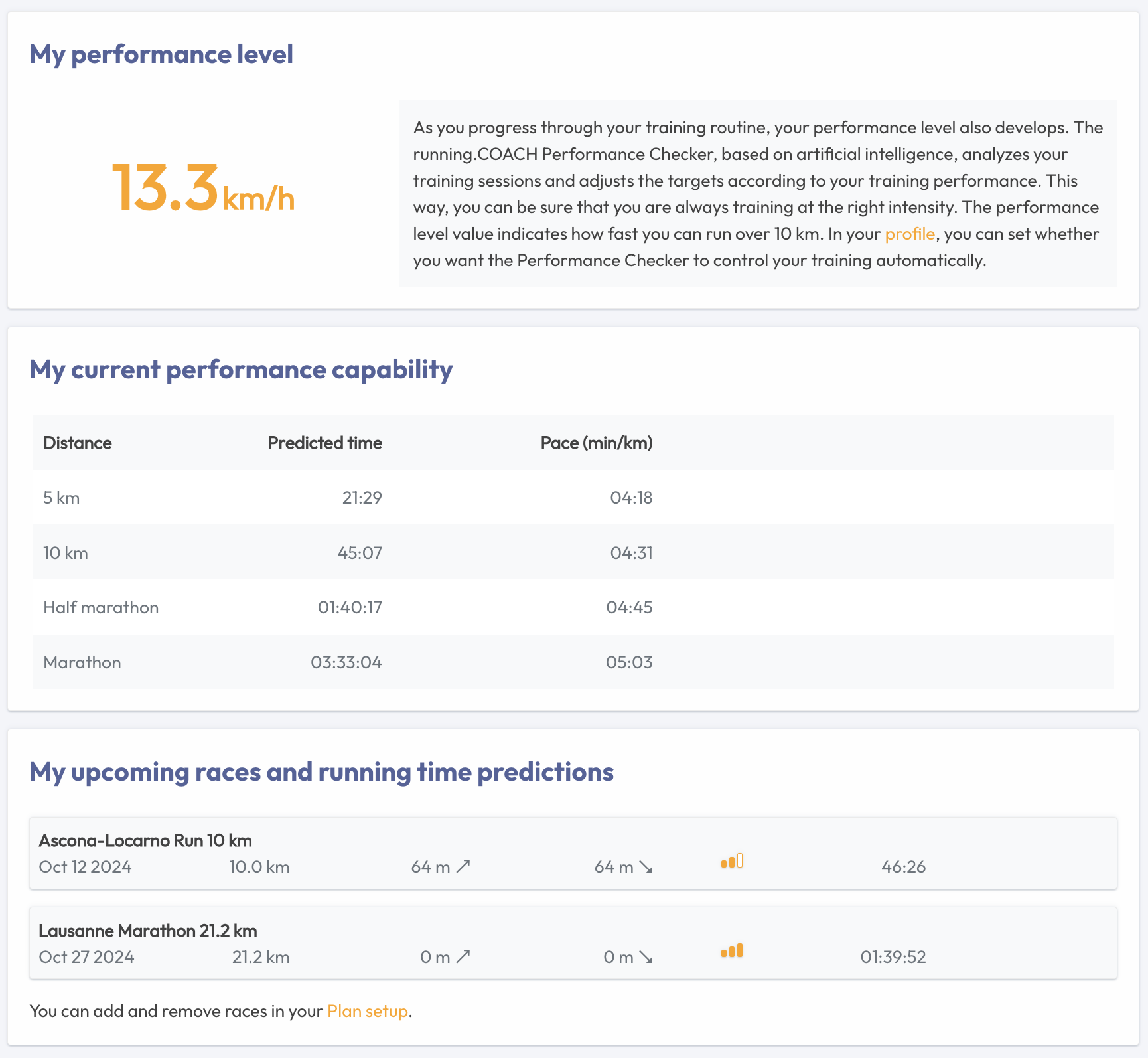A dynamic training plan constantly adapts to your individual needs and performance progress. Unlike a static plan, which provides fixed guidelines for a specific period, a dynamic plan flexibly responds to changes in training and daily life. This adaptability is crucial to avoid overloading, keep motivation high, and maximize training efficiency. The dynamics of running.COACH consider changes in performance level, “soft” factors of training feelings, and unforeseen events like illness or professional obligations. In this article, we explain how performance-based adjustments work.
Prerequisites for Performance-Based Dynamics
For running.COACH to adapt the training to your performance development, completed training data must be added to the system. The easiest way to do this is by uploading GPS data into running.COACH or directly tracking the training with the running.COACH app.
How to easily upload your GPS data into your plan: Garmin, Polar, Suunto, Fitbit, Strava, Coros, Apple Health
Adjustment to Changes in Performance
The graph illustrates the analyzed training sessions and performance development. This serves to explain the function in this blog article and is not visible in the training plan.
Performance-based adjustment starts with the analysis carried out by the specially developed “Performance Tracker.” This algorithm uses the extensive running.COACH database, which includes millions of training sessions, to determine the performance level of each uploaded training session. It doesn’t matter whether the training was intensive, an endurance run, or a long jog. The Performance Tracker takes into account all uploaded factors like pace, pulse, elevation gain, recovery, etc., and calculates a performance value (which reflects the race pace over 10 km based on training performance) for each training session. In the graph above, these values are represented as purple dots.
From these individual performance values, the “rolling” value is calculated, which represents the average performance capacity over the most recent training sessions. This average is crucial for defining future training guidelines. In the example above, the plan was adjusted on 18 May due to a competition that was held, and the rolling value is ” surpassed” accordingly so that the targets are set above the rolling value until the next competition.
How Often Are Adjustments Made?
After each training session, an analysis is performed to evaluate the current performance level. If the plan detects that the “rolling” performance development value has changed by 0.2 km/h, the plan is automatically adjusted. Additionally, you will receive a notification about the adjustment, which can be undone with a simple click if necessary.

Automated training analysis and automatic plan adjustment can be disabled in the settings if desired.
Special Case: Running Competitions
Running competitions have a strongly corrective effect on the dynamics of the training plan. After recording a race time, the result of the completed run is converted to a 10 km pace and used as the new baseline value. In other words, the rolling curve is adjusted to this value. However, this adjustment is only integrated into the plan once the proposed adjustment has been accepted.
Predictions for Different Distances
Based on the determined performance level, predictions can also be made for planned running competitions and other distances. You can find all your predictions on the following page:

https://runningcoach.me/users/performance
APP
In the app, the page with the performance level and the predictions can be accessed via Settings -> Performance.

The bar at the top shows where you are on the spectrum compared to the very best runners.


